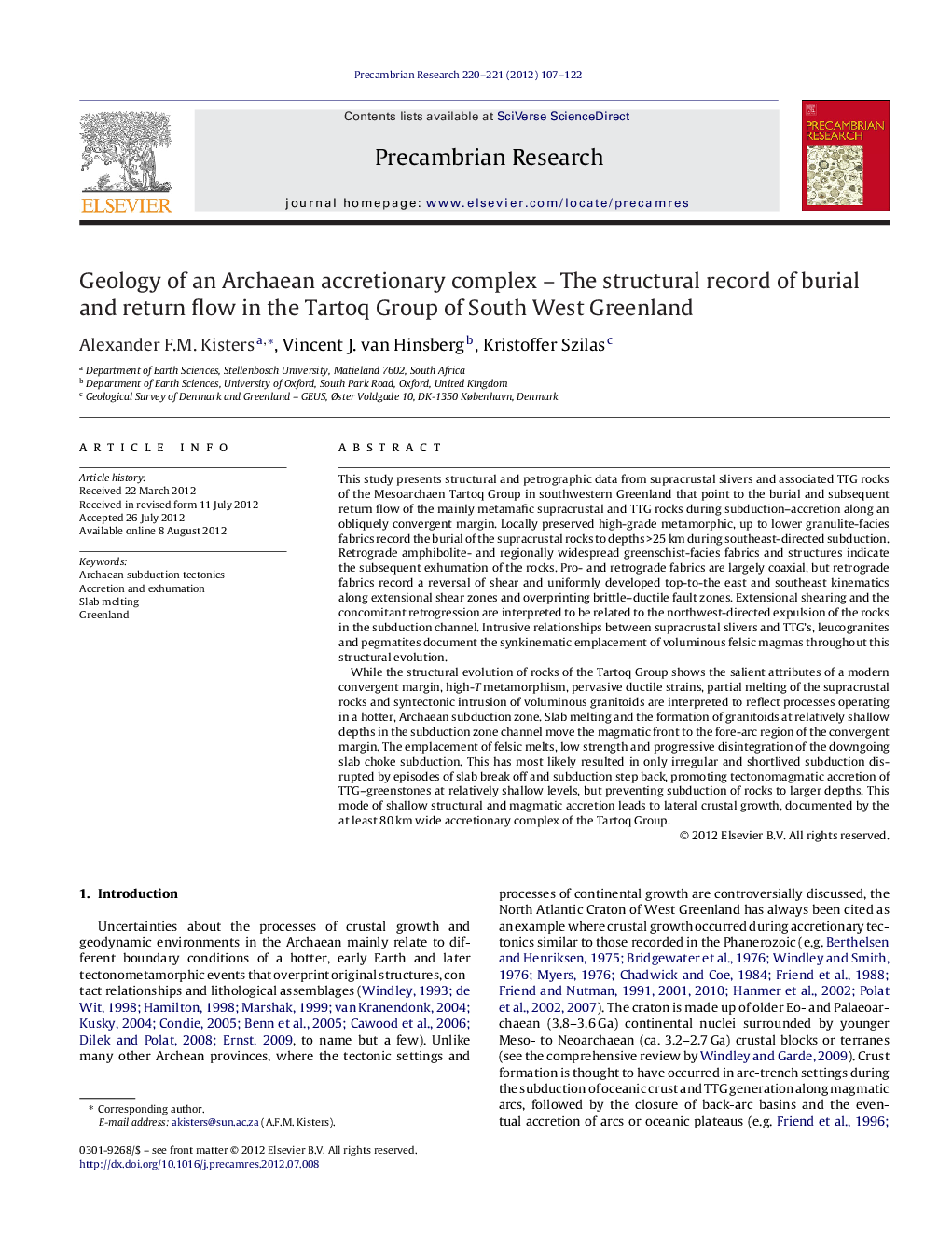| کد مقاله | کد نشریه | سال انتشار | مقاله انگلیسی | نسخه تمام متن |
|---|---|---|---|---|
| 4723476 | 1639652 | 2012 | 16 صفحه PDF | دانلود رایگان |

This study presents structural and petrographic data from supracrustal slivers and associated TTG rocks of the Mesoarchaen Tartoq Group in southwestern Greenland that point to the burial and subsequent return flow of the mainly metamafic supracrustal and TTG rocks during subduction–accretion along an obliquely convergent margin. Locally preserved high-grade metamorphic, up to lower granulite-facies fabrics record the burial of the supracrustal rocks to depths >25 km during southeast-directed subduction. Retrograde amphibolite- and regionally widespread greenschist-facies fabrics and structures indicate the subsequent exhumation of the rocks. Pro- and retrograde fabrics are largely coaxial, but retrograde fabrics record a reversal of shear and uniformly developed top-to-the east and southeast kinematics along extensional shear zones and overprinting brittle–ductile fault zones. Extensional shearing and the concomitant retrogression are interpreted to be related to the northwest-directed expulsion of the rocks in the subduction channel. Intrusive relationships between supracrustal slivers and TTG's, leucogranites and pegmatites document the synkinematic emplacement of voluminous felsic magmas throughout this structural evolution.While the structural evolution of rocks of the Tartoq Group shows the salient attributes of a modern convergent margin, high-T metamorphism, pervasive ductile strains, partial melting of the supracrustal rocks and syntectonic intrusion of voluminous granitoids are interpreted to reflect processes operating in a hotter, Archaean subduction zone. Slab melting and the formation of granitoids at relatively shallow depths in the subduction zone channel move the magmatic front to the fore-arc region of the convergent margin. The emplacement of felsic melts, low strength and progressive disintegration of the downgoing slab choke subduction. This has most likely resulted in only irregular and shortlived subduction disrupted by episodes of slab break off and subduction step back, promoting tectonomagmatic accretion of TTG–greenstones at relatively shallow levels, but preventing subduction of rocks to larger depths. This mode of shallow structural and magmatic accretion leads to lateral crustal growth, documented by the at least 80 km wide accretionary complex of the Tartoq Group.
► The Mesoarchaean Tartoq Group in southwest Greenland represents a mélange-like accretionary complex.
► Structures and P–T paths illustrate the burial and return flow of supracrustal rocks in a hotter, Archaean subduction zone.
► Slab melting and low strength of the downgoing plate promote the disintegration of the subducted crust.
► Only irregular and shortlived subduction disrupted by episodes of slab break off and subduction step back result.
► Structural disruption of the downgoing slab prevents subduction of rocks to larger depths in the subduction zone.
Journal: Precambrian Research - Volumes 220–221, November 2012, Pages 107–122